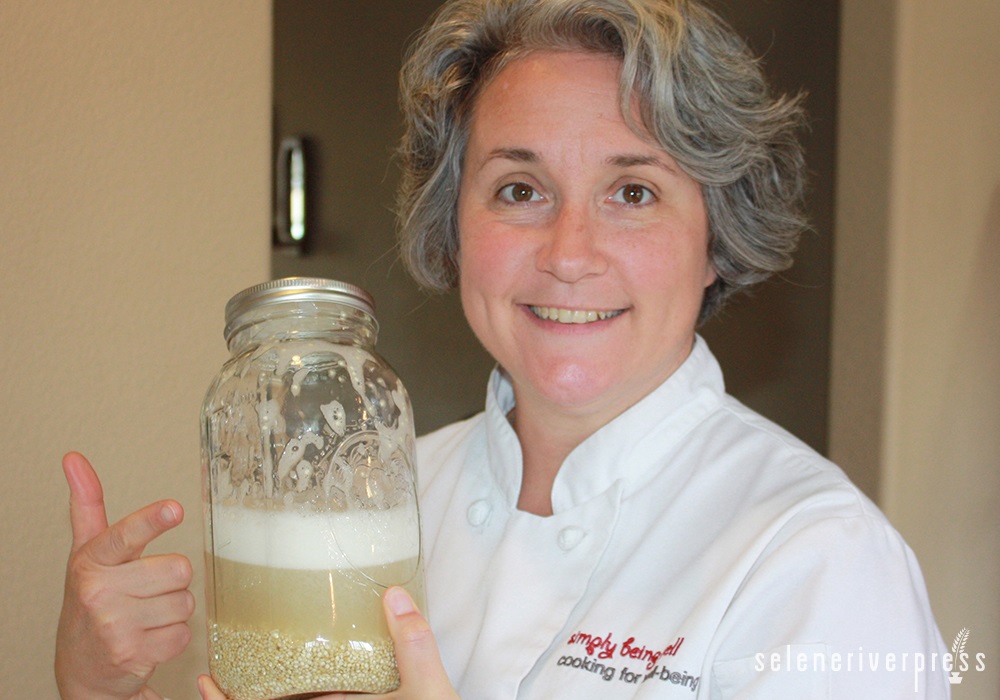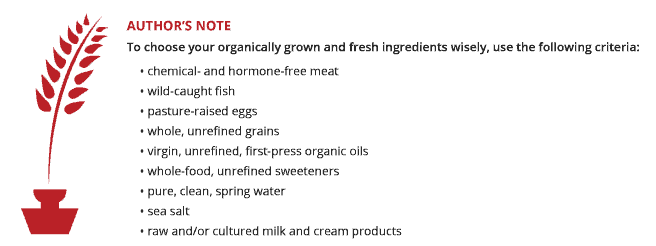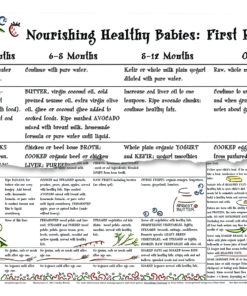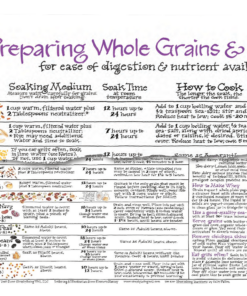Whole grains are rich in minerals and B vitamins. However, to unlock their nutrients and allow for efficient digestion and absorption, you must prepare them correctly. In order to enjoy these nutritional powerhouses, you must first address the following three substances that are present in every whole grain:
- Enzyme inhibitors: These neutralize the enzymes in our digestive tract, making it difficult—or even impossible—to fully digest our food.

Quinoa, on the left, is the only grain that contains saponins- the cause of the soap suds in the jar. Quinoa is the only grain that MUST be rinsed because of the soap suds. - Phytates or phytic acid: Found in all grains, phytic acid can block the absorption of important minerals (including calcium, magnesium, copper, iron, and zinc) by combining with them in the intestinal tract. Therefore, a diet high in phytic-acid-containing grains that have not been neutralized can lead to serious mineral deficiencies and bone loss.
- Complex proteins: Because the proteins in all grains are very hard for humans to digest, consuming grains that have not undergone a predigestion process can put a huge strain on your whole digestive system. For starters, this can lead to allergies, celiac disease, chronic indigestion, and candida. Predigesting complex proteins (such as gluten) helps your body digest them efficiently and prevents strain on your digestive tract.
Sprouting and soaking (with a deactivator or neutralizing agent) are two methods that neutralize enzyme inhibitors and phytates and also help break down complex proteins. Adding whey, yogurt, kefir, or buttermilk (or, for people with dairy allergies, lemon juice or apple cider vinegar) to the soaking water will help yield digestible beans and grains, as will a long soak and a slow cook at low temperature.
Quinoa is especially problematic because it contains saponins, compounds that foam and produce soap bubbles. In fact, saponins are used in detergents and commercially produced soap and shampoo. They can irritate the digestive tract, which is why you must soak and rinse quinoa before cooking it. Alternatively, you may sprout it instead.
Quinoa: The Soaking Method
Ingredients
For soaking:
1 cup quinoa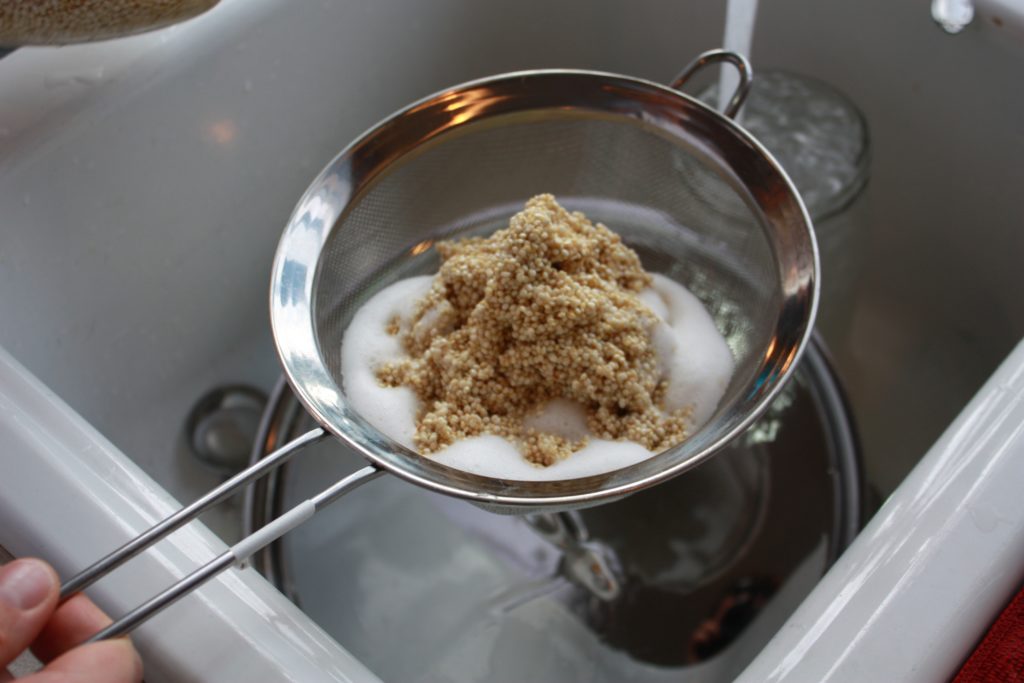
1 tablespoon neutralizer (whey, yogurt, cultured buttermilk, kefir, apple cider vinegar, or lemon juice)
3 cups water, warm or at room temperature
For cooking:
1 cup soaked and rinsed quinoa to 3 cups water or bone broth
Instructions
- First, soak the quinoa: combine quinoa with neutralizer and water. Soak, covered, for 24 hours. Rinse well before cooking.
- To cook: combine soaked and rinsed quinoa with water or bone broth. Bring to a boil. Skim and discard scum, put to a simmer, and cover. Cook about 1 hour.
- Serve grains with lots of butter or ghee from pastured cows, as vitamins A and D help neutralize any remaining phytic acid. Good fat also helps ensure absorption of nutrients.
Sprouting Whole Grains
You may wish to sprout your quinoa rather than soak it. Sprouting turns the quinoa into a plant, which human bodies can digest much more easily than whole grains.
Instructions
- Fill a wide-mouth glass jar with about an inch of whole grains. Place a square of mesh or cheesecloth over the jar. Secure with ring from lid or a rubber band. Rinse.
- Hydrate by covering with filtered water and let sit 12 hours or overnight.
- Drain and rinse with fresh water.
- Invert jar at a diagonal and place in a bowl. (This will encourage drainage and discourage mold.) Put on windowsill or a bright sunny spot.
- Rinse 2–3 times each day with fresh water until you see sprouts. Sprouts will be very small. (Quinoa sprouts look like little tails, or flagella.) Usually they will sprout within 2–3 days.
For more information about how to prepare grains and beans for ease of digestion and nutrient availability, see my “Preparing Whole Grains and Legumes” chart. Also look for the fourth volume in my Cooking Techniques series: Cooking Techniques for the Gut and Psychology Syndrome™ Diet, Part IV: Nuts and Seeds, due 2018.


